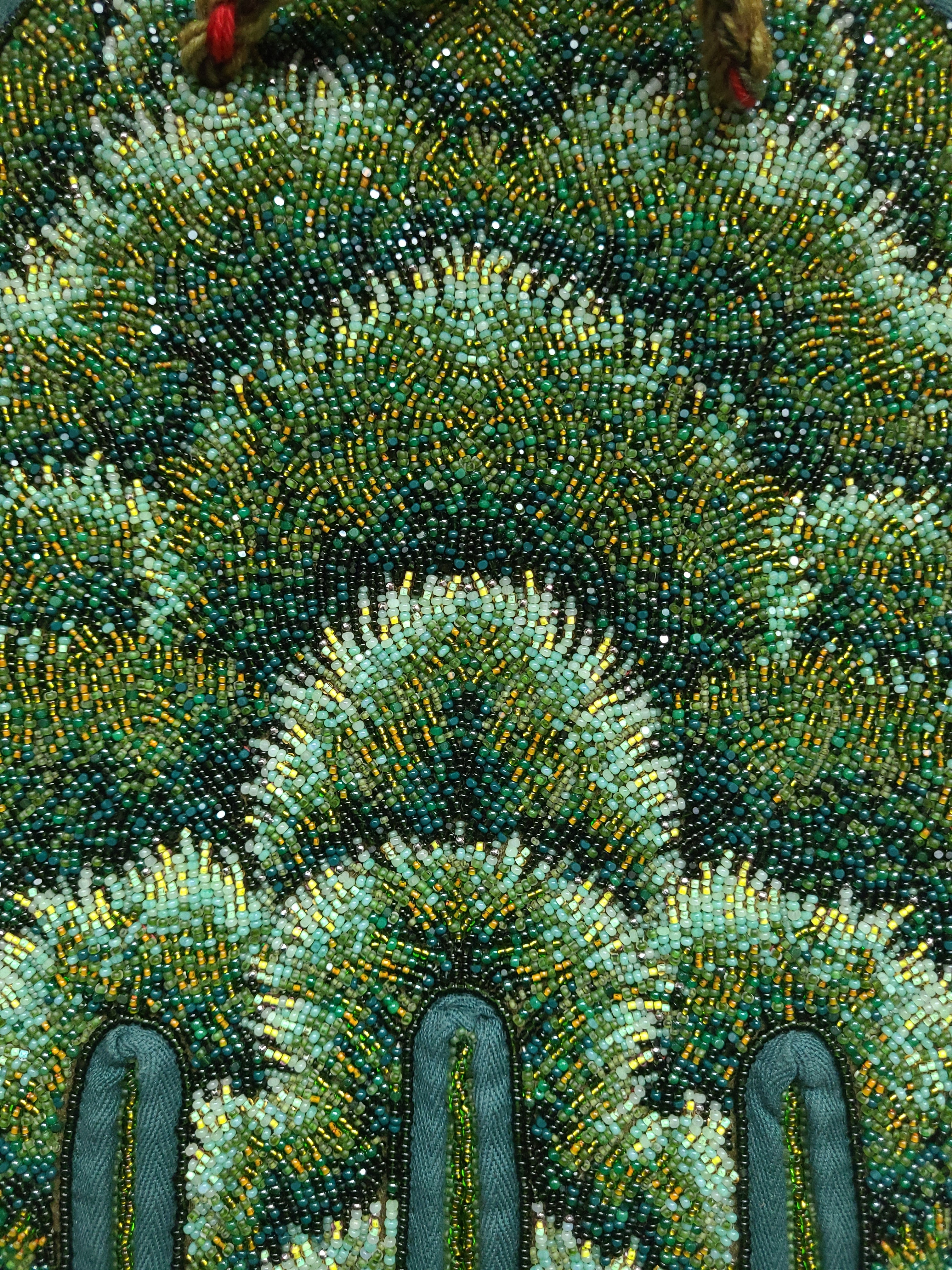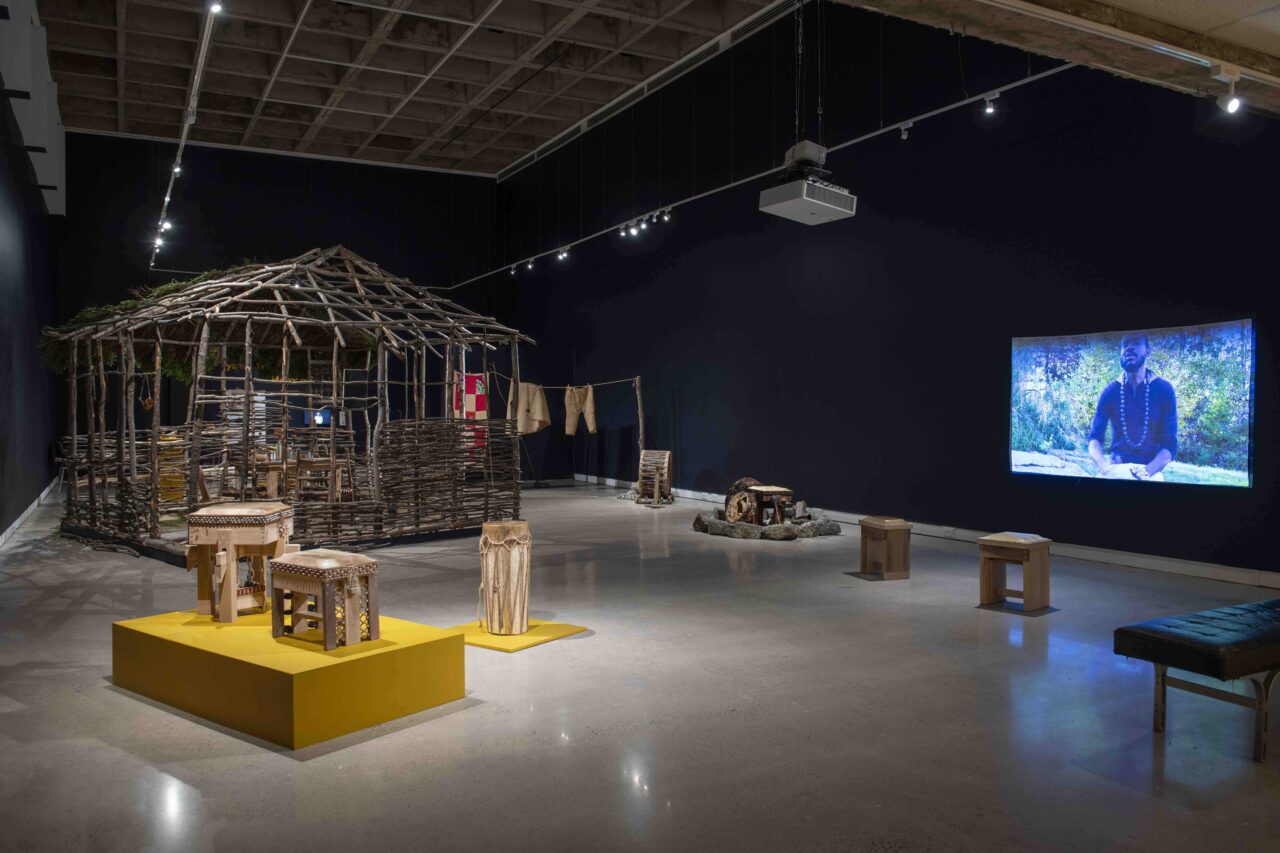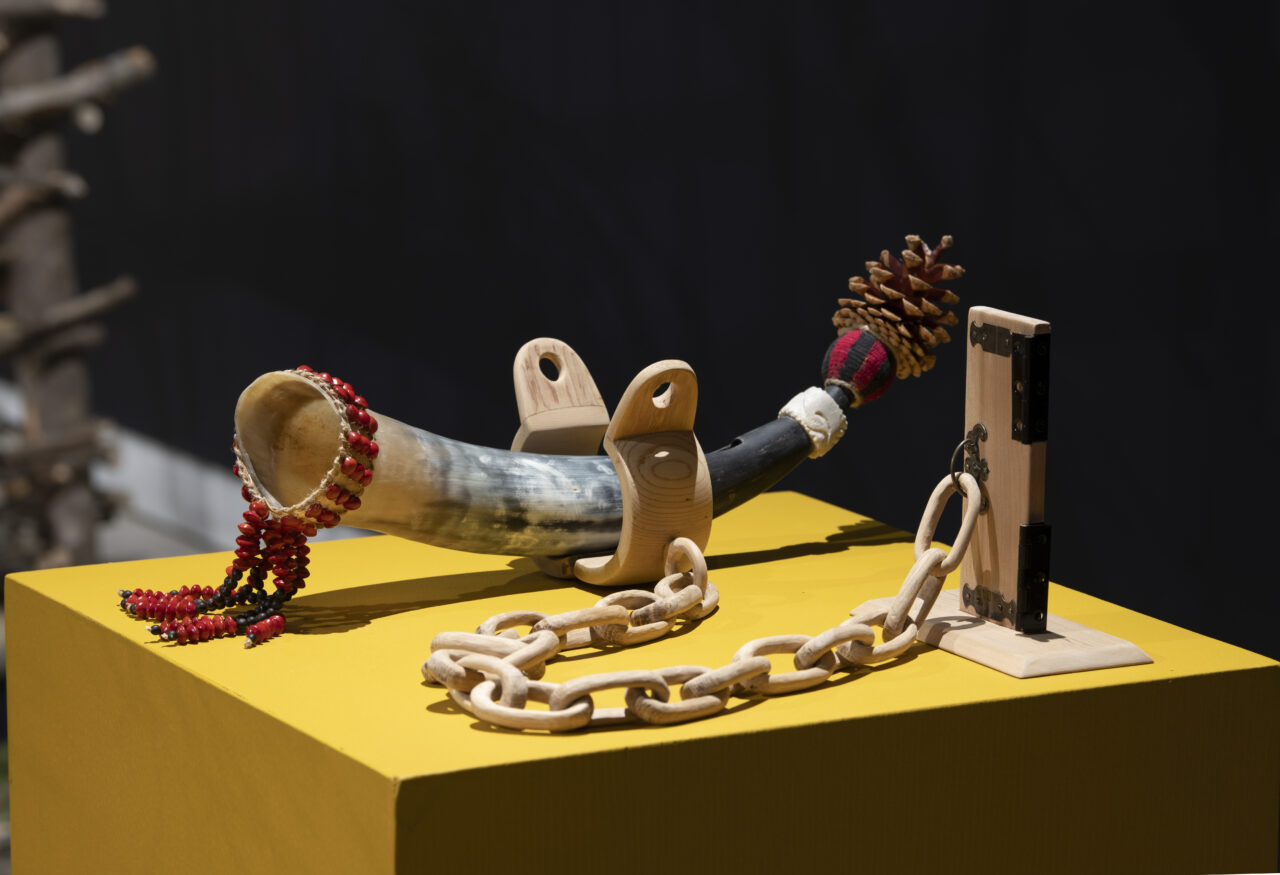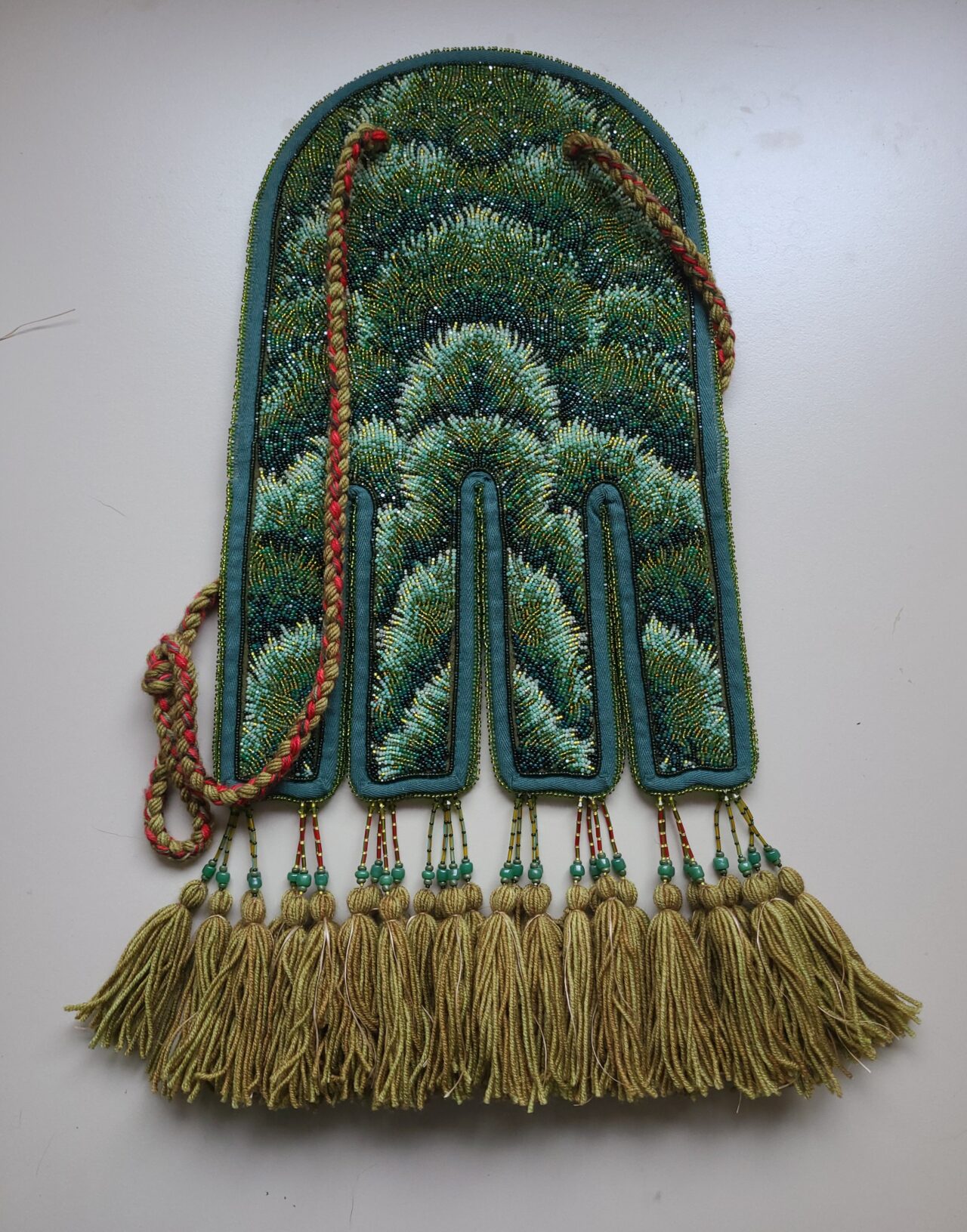ECU Graduate Students Among 2024 Canada Graduate Scholarship Master’s Program Scholarship Recipients

Haley Bassett, Tall Grass (detail), 2023. Approx. 19 x 14 inches, vintage and contemporary seed beads, vintage bugle and pony beads, polished iron faceted beads, cotton twill, thread, sinew, wool yarn, stroud cloth, vintage Swarovski crystals, cotton fabric, denim. (Image courtesy Haley Bassett)
Posted on | Updated
The program, administered by the federal government, provides up to $27,000 in financial support to students demonstrating high standards of achievement.
Emily Carr University of Art + Design (ECU) graduate students are among the 2024 recipients of scholarships from the Canada Graduate Scholarship — Master’s (CGS M) Black Scholars and Indigenous Scholars programs.
Naimah-Bint Amin (MFA 2026), Maria Azam (MDes 2025), Haley Bassett (MFA 2025), Naomi Watkins (MFA 2025) and Tyshan Wright (MFA 2025) are among this year’s distinguished recipients.
“The CGS M program plays an incredibly important role in advancing research excellence among graduate students in Canada. Its substantial financial support allows some of our most outstanding students to pursue innovative and impactful creative research to drive forward their academic and professional growth,” says Justin Langlois, Associate Vice President of Research + Dean of Graduate Studies at ECU.
“It’s also important to recognize the significance of the Indigenous Scholars Awards and Supplements and the Black Scholars Funding programs, through which Haley and Tyshan received their CGS M funding. These initiatives underscore the Canadian government’s commitment to creating a more inclusive academic landscape that elevates the voices and perspectives of emerging researchers from communities which have historically been underrepresented within academia.”
The CGS M provides financial support to students who demonstrate a high standard of achievement. The initiative provides up to $27,000 to students engaged in full-time study. The program is administered by the Natural Sciences and Engineering Research Council of Canada, the Canadian Institutes of Health Research and the Social Sciences and Humanities Research Council.


(Top and bottom): Tyshan Wright, Installation views, Maroon Town exhibition, MSVU Art Gallery, Halifax, Sept. 23, 2022 to Dec. 9, 2023. (Photo by Steve Farmer / courtesy Tyshan Wright)
Tyshan, a Kjipuktuk (Halifax)-based artist and Low-Residency Master of Fine Arts student at ECU, has been “investigating the legacy of Jamaican Maroons exiled from Trelawny Town, Jamaica, to Halifax, Nova Scotia, in 1796.” Known as a “Keeper of the Heritage” of the Jamaican Maroons, Tyshan is a “descendant of Africans who evaded enslavement and created their own self-sustaining communities in the mountains of Jamaica in the 1600s.”
“During the course of my studies I have been visiting local Maroon heritage sites to consider the spiritual, spatial and material practices of Maroons in Nova Scotia, both past and present," he says. Tyshan will continue this site-based exploration in the coming months, as well as working from his studio to create an expansive, multilayered sculptural work that confronts the dominant colonial narrative at Maroon heritages sites.
Tyshan says the news of his scholarship found him “in a state of surprise and disbelief. It will be a great help for the upcoming semesters. It allows me to focus more on my studies and creative practice. It’s always encouraging to know you have people believing in and supporting your work.”
Haley, an artist of Métis and settler descent from Dawson Creek, BC, lives and works in Sunset Prairie, BC, in the traditional territory of the Dene, Dane-zaa, and Cree encompassed by Treaty 8 and the Métis Homeland.
“It’s huge,” Haley says of the CGS M scholarship. “I think it’s going to help me do my best work. My practice is particularly labor-intensive, so this kind of financial help will go a long way for me.”

Haley Bassett, Tall Grass, 2023. Approx. 19 x 14 inches, vintage and contemporary seed beads, vintage bugle and pony beads, polished iron faceted beads, cotton twill, thread, sinew, wool yarn, stroud cloth, vintage Swarovski crystals, cotton fabric, denim. (Image courtesy Haley Bassett)
Haley’s interdisciplinary practice is also deeply connected to place. Only recently stepping down from her position as executive director of the Peace Liard Regional Arts Council, Haley is a longtime advocate for the arts in the north and central province.
“The land there very much informs my work,” she says. “So, the Low-Residency program has been great in helping me stay there and maintain that connection while I do my work and pursue my MFA at the same time.”
Haley notes that, as part of this advocacy, she joined the board of Arts BC in 2022 and the BC Arts Council in 2023.
Often, Haley’s exploration of place takes the form of self-portraiture, which examines the “relationship between self and the land.” She also makes “fire bags,” a Métis heritage art form named for its traditional use as a container for flint, steel, tobacco or ammunition. She was mentored in the form by Gregory Scofield, a Métis artist and knowledge keeper.
Haley says she has often looked for explicit connections between these different aspects of her art practice. But a recent conversation with Nya Lewis, director and curator of Artspeak Gallery and Curator in Residence at the Vancouver Art Gallery, gave Haley an opportunity to rethink this impulse.
“Nya said it can take a lifetime to make that kind of connection, and sometimes the only common denominator is you – and that’s enough,” Haley recounts. “So, for now, I’m going to use my time in the MFA program to really delve into the fire bags.”
Visit ECU online to learn more about studying in the Master of Fine Arts and Master of Design programs at Emily Carr University.